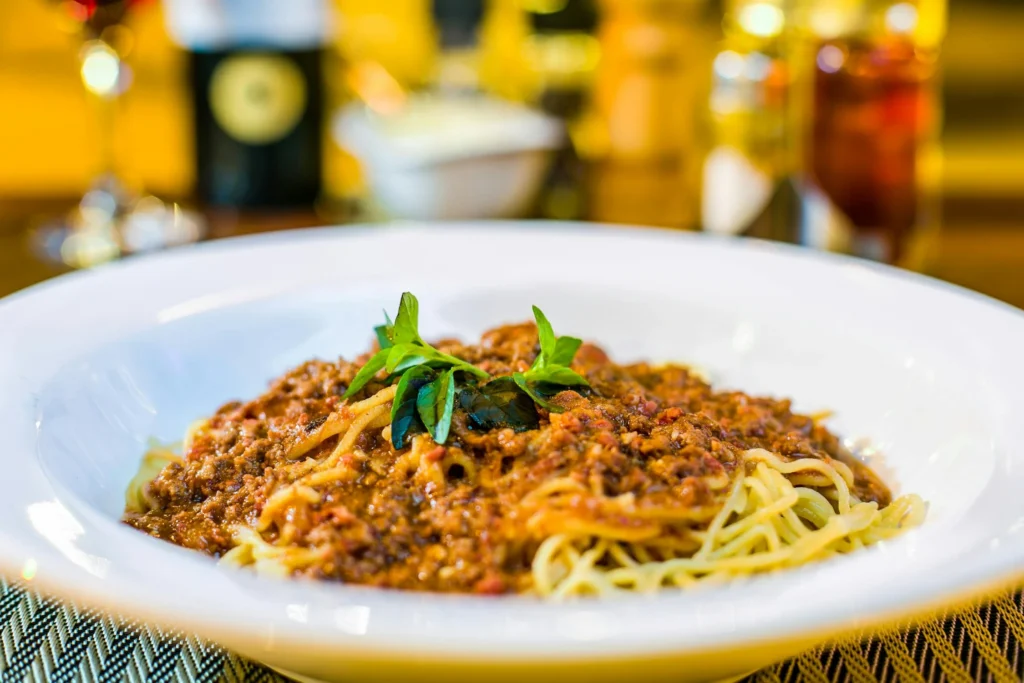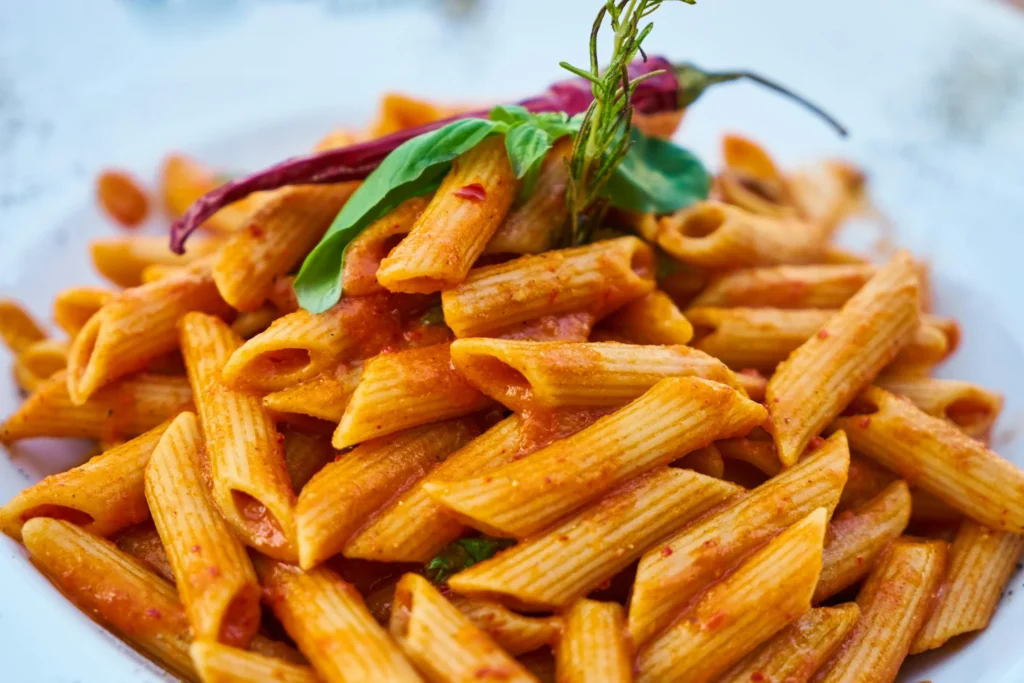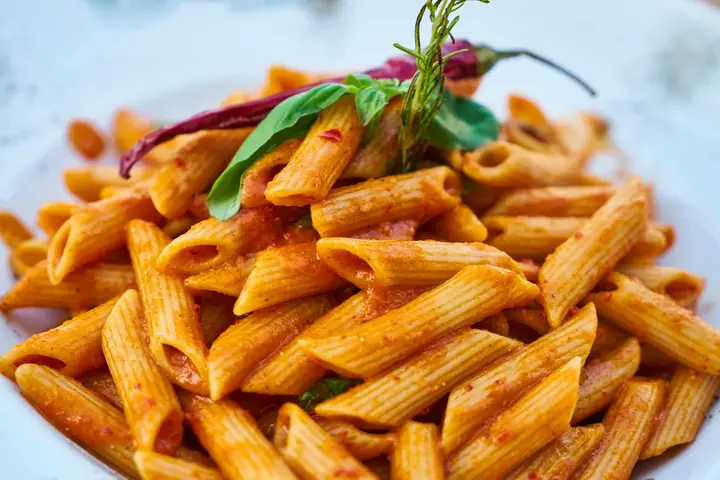Introduction of Protein Pasta:

When people think of making delicious and healthy meals for them protein pasta is always a favorite of many people. It provides the satisfaction and comfort of traditional pastas, and it is also a powerful protein that supports the growth of muscles and makes your belly fuller for a long time. When you want more protein in your diet protein pastas will be an adaptable and tasty option that you can add to your daily meal.
In this article, we are going to explore the 10 best kinds of pasta by which you can satisfy your hunger and fulfill your nutritional goals.
What is Protein Pasta?
Definition and Benefits:
The type of pastas in which high protein is present makes it nutritious and an alternative to traditional pastas. It is possible by adding or using ingredients like chickpeas, quinoa, lentils, and different protein powders. Carbohydrates are essential for the body because they provide energy. Additionally, it contains amino acids that support overall health and aid in muscle repair.
Why Choose Protein Pasta?
For those who look to increase their protein intake without sacrificing the food they love, protein pasta is an excellent meal for them. It is very beneficial for those who are aiming to build muscle or lose weight, like vegans, athletes, etc. It helps in maintaining a balanced diet, stabilizes blood sugar levels, and in controlling appetite.
How to Choose the Best Protein Pasta
- Consider the Source of Protein
When selecting protein pastas, check the source of protein carefully. Legumes like chickpeas and lentils often serve as common protein sources. Pair these with grains to create a complete protein meal. To boost the protein content some pastas may contain protein powders like pea or whey protein.
- Check the Protein Content
Before buying pastas, check the nutrition label and read the protein content because not all protein pastas offer the same amount of protein. Choose an option that provides at least 10-20 grams of protein. Make sure that you are getting this essential nutrient as per your requirement.
- Consider Dietary Restrictions
A person who has gluten intolerance or veganism should choose a protein pasta that is according to his needs. Several high-protein pastas are plant-based and naturally gluten-free, making them suitable for a wide range of diets.
Top 10 High-Protein Pasta Options

1. Chickpea Pasta:
For those people who are looking for high-protein and gluten-free options, chickpea pasta is a very excellent choice for them. Made from chickpea flour, which offers around 14 grams of protein. Its flavor is slightly nutty and pairs well with a variety of sauces.
2. Lentil Pasta:
If you are looking for an excellent protein-rich option then lentil pasta is best for you because it is made from red or green lentils. It offers around 12-15 grams of protein While enjoying a hearty meal this will be a great way to boost your protein intake. It tastes mildly earthy and has a robust texture.
3. Edamame Pasta:
Edamame pasta is the highest-protein pasta it is crafted from young soybean, it offers up to 24 grams of protein. For people who are looking for a plant-based protein source, it is the best choice for them.
4. Black Bean Pasta:
Black bean pasta provides 14-16 grams of protein and it is made from black bean flour. Other than protein it also contains fiber, which helps you feel full for a long time and helps in digestion. It is unique due to its savory flavor and dark color.
5. Quinoa Pasta:
Quinoa pasta offers a balanced and nutritious meal when it combines the full protein of quinoa with legumes and other grains. It is a good protein boost and has 8-10 grams of protein, it has a slightly nutty flavor and is also gluten-free.
6. Pea Protein Pasta:
Pea protein pastas, made from pea protein isolate, are a new addition to the market. They offer around 20 grams of protein and deliver a high protein content by design. Its smooth texture and its mild flavor make it an adaptive choice for pasta dishes.
7. Soy Protein Pasta:
Soy protein pasta is specially designed for those who need to avoid gluten but it’s a protein-packed option. This pasta contains up to 18 grams of protein and also helps in muscle recovery and growth, providing a full protein profile.
8. Whole Wheat Protein-Enhanced Pasta:
Whole wheat protein-enhanced pasta is a very good option for those who like or prefer the taste of traditional pastas. It contains additional protein because it is made from whole wheat flour and has 10-12 grams of protein. For people who want to enjoy a familiar taste and still want to benefit from added protein, it is best for them.
9. Spelt Pasta:
This pasta is made from spelt, it is an ancient grain that is high in protein than the regular wheat we use. It contains 9 grams of protein in it. This offers a slightly nutty and sweet taste because it is flavorful and nutritious.
10. Brown Rice and Pea Protein Pasta:
This pasta is made from a mixture of brown rice and pea protein to create a gluten-free meal. It contains 14 grams of protein per pack, for the people who need to avoid gluten and want to enjoy a sustainable protein this will be a great choice for them.
How to Cook Protein Pasta

Cooking Tips for the Best Results:
Compared to traditional kinds of pastas these protein kinds of pastas have different textures and cooking times, It is very necessary to follow the instructions written on the package. Normally, Protein kinds of pastas are cooked in plenty of boiling water and a pinch of salt is added to prevent it from sticking. To achieve a good texture keep an eye on the time because it is very easy to cook.
Pairing Protein Pastas with Sauces:
To elevate your pasta dish to a new level you should select the right sauce. These are some suggestions:
- Tomato-Based Sauces: Pair it well with lentil and chickpea pasta.
- Creamy Sauces: This gives the final touch to the mild flavor of quinoa protein, and pea pasta.
- Pesto: This works amazingly with whole wheat protein-enhanced and spelt pasta.
Nutritional Benefits of Protein Pasta
- Supports Muscle Growth
As a post-workout meal, these high-protein pastas greatly support the repair and growth of muscles.
- Promotes Satiety and Weight Management
The protein pastas help to get rid of overeating, weight management efforts, and to stay full for a long time.
- Stabilizes Blood Sugar Levels
Compared with regular pastas, protein pastas have a very low glycemic index, which is why it has a gradual effect on blood sugar levels. For those who are managing diabetes or sugar levels, it is a better option.
Conclusion
So, For those who look to enjoy delicious pastas without any compromise on nutrition, Protein pastas are a game changer for them. A variety of options are available from edamame to chickpea, Which is why the protein-rich choice for every dietary or palate need. By adding these pastas to your diet meal you can support your fitness goals, keep yourself satisfied with every bite, and help for promoting your better health. If you are cooking for a weeknight or preparing a quick dish for someone protein pastas will be a nutritious and adaptable choice in your pantry.
FAQs
- Is protein pasta good for you?
Yes, normally it is very good for you because it is high in protein, promotes satiety, and also helps in muscle growth and recovery. - What does protein pastas taste like?
Protein pastas have a slightly different texture and taste from that traditional pastas. You can expect these things nutty and earthy flavor, mild taste, and slightly denser texture. - What is protein pasta made of?
A protein pasta is made from many ingredients that are high in protein like legumes, soybeans, Quinoa, whole grains, etc. - Can protein pastas make you fat?
Yes, like any food protein pastas can also contribute to weight gain. - Does pastas lose protein when cooked?
No, cooking pastas can not lose its protein because protein is heat-stable, which means it can not break down or even not destroyed.
